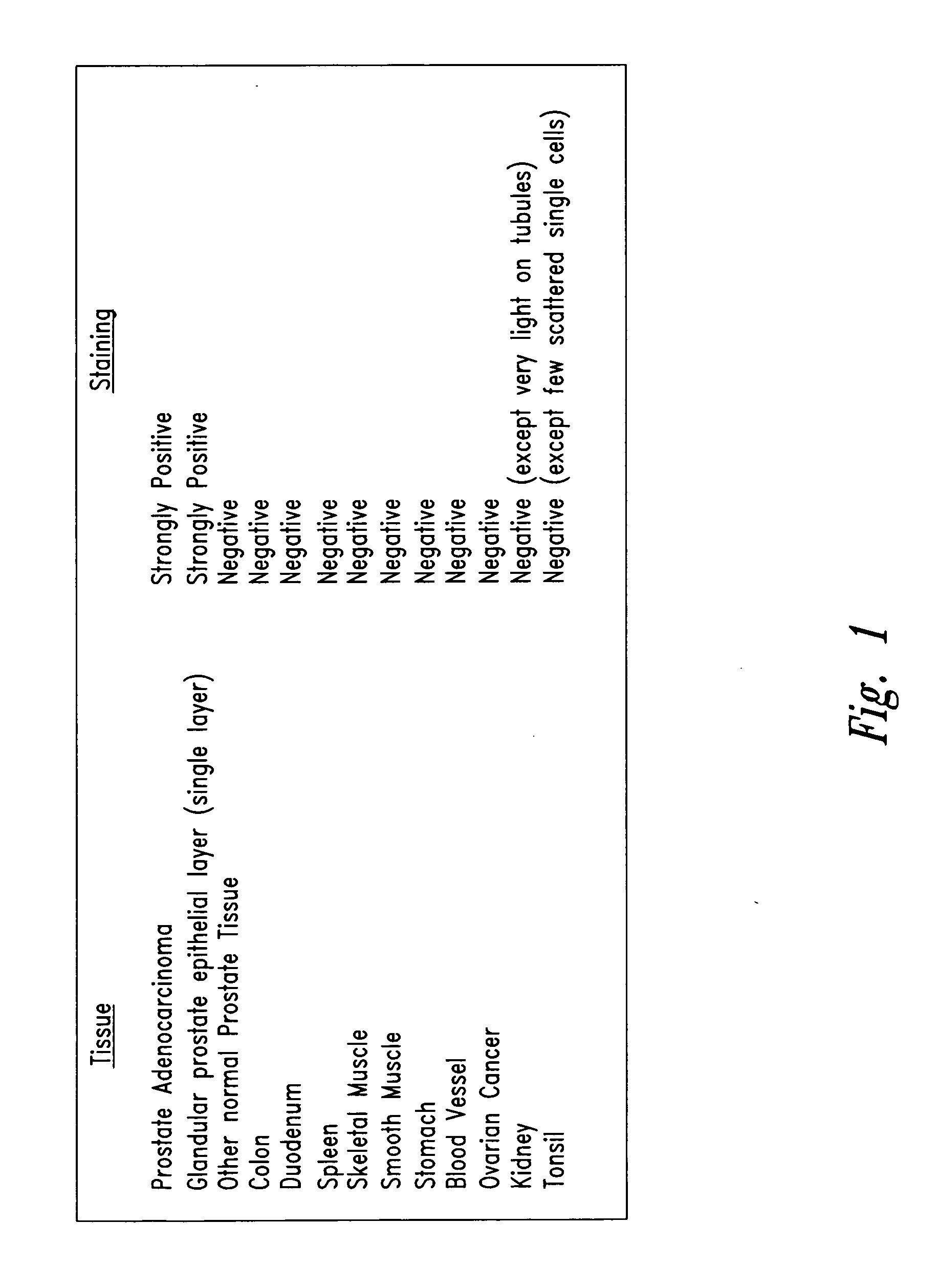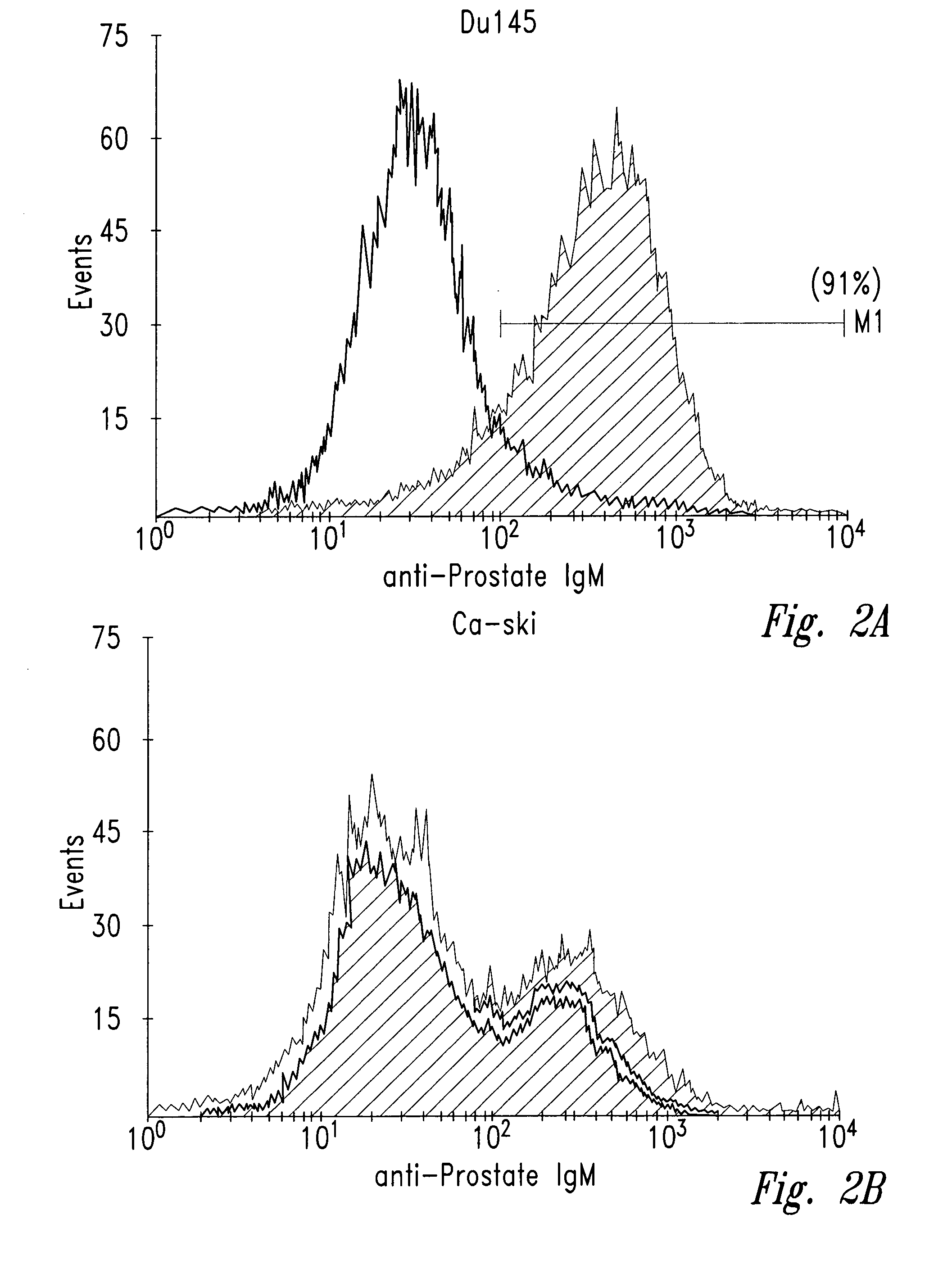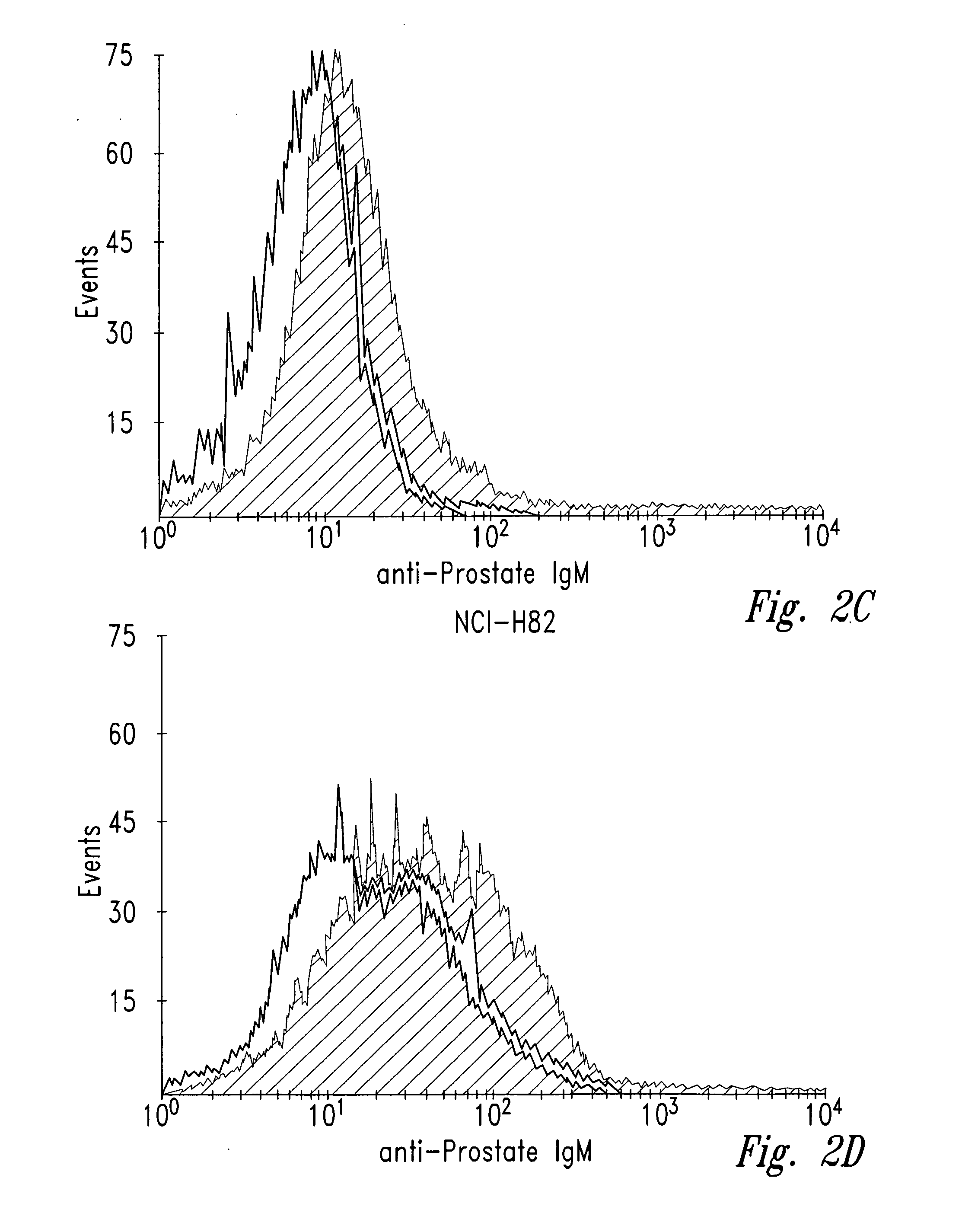Detection and treatment of prostate cancer
a prostate cancer and detection technology, applied in the field of prostate cancer, can solve the problems of unfavorable chemotherapy, inability to differentiate, and unnecessary treatment of patients with benign diseases, so as to enhance the immune response, and enhance the immune response.
- Summary
- Abstract
- Description
- Claims
- Application Information
AI Technical Summary
Benefits of technology
Problems solved by technology
Method used
Image
Examples
example 1
Immunohistology of Sections of Human Tissues
[0038] Tissue sections obtained from various human organs were directly stained with antibody NUH2. A second anti-IgM antibody chemically linked to horseradish peroxidase (HRP) further reacted with the tissue section and the location of bound antibody was observed by reaction with the FW substrate. Tissues sections were counter stained with eosin to detect location of cells in the section by a blue color. As shown in FIG. 1 most normal tissues were completely negative and did not bind antibody NUH2. Prostate adenocarcinoma, however, strongly bound NUH2 and strongly expresses the antigen, sialyl I. Normal prostate showed expression of antigen restricted to one single cell layer lining the glandular epithelium. All other cells in normal prostate were negative. This antigen is highly restricted to prostate cancer and is negative for most normal tissues tested. Over 95% of tonsil was negative, however, several scattered single cells within th...
example 2
Expression of Prostate Cancer Antigen (Sialyl I) on Tumor Cell Lines as Determined by Cell Sorting Using Antibody NUH2
[0039] Human tumor cell lines were washed with phosphate-buffered saline (PBS) and allowed to bind to antibody NUH2 in suspension at a concentration of 10 μg / ml in PBS. A duplicate sample of the same cell line was incubated with a control IgM murine antibody in parallel as a negative control. After incubation for 1 hour at 4° C., the cells were washed with PBS and incubated with goat anti-mouse IgM coupled to FITC. The intensity of fluorescence was measured for each population by fluorescence activated cell sorter analysis (FACS). For direct visualization of the results, histograms of the same cell type reacted with either NUH2 or control antibody were superimposed (FIG. 2). Prostate cancer cell line DU145 strongly expresses sialyl I antigen, whereas most other tumor cell lines were completely negative. The lung cancer cell line NCIH446 and the colon cancer cell lin...
example 3
Immunostaining Glycolipid Antigens Directly on Thin Layer Chromatograms Using Antibody NUH2
[0041] Glycolipids were extracted from tissues using chloroform and methanol according to the Folch procedure and separated into aqueous (upper) and organic (lower) phases. The upper phase extract was dried under rotary evaporation and the glycolipids were resuspended in methanol and subjected to ion exchange chromatography using DEAE Sepharose®. Neutral glycolipids elute in the non-bound fractions while charged glycolipids were eluted with increasing concentrations of ammonium bicarbonate in methanol.
[0042] Samples from various fractions were applied to a silica gel high performance thin layer chromatography plate (HPTLC) and the chromatograms were developed in a chamber containing chloroform / methanol / 0.02% CaCl2 (5:4:1). After chromatography, the dried plate was cut into sections for chemical staining and immunostaining. Orcinol reagent was used to chemically stain a section of the plate t...
PUM
| Property | Measurement | Unit |
|---|---|---|
| concentration | aaaaa | aaaaa |
| v/v | aaaaa | aaaaa |
| pH | aaaaa | aaaaa |
Abstract
Description
Claims
Application Information
 Login to View More
Login to View More - R&D
- Intellectual Property
- Life Sciences
- Materials
- Tech Scout
- Unparalleled Data Quality
- Higher Quality Content
- 60% Fewer Hallucinations
Browse by: Latest US Patents, China's latest patents, Technical Efficacy Thesaurus, Application Domain, Technology Topic, Popular Technical Reports.
© 2025 PatSnap. All rights reserved.Legal|Privacy policy|Modern Slavery Act Transparency Statement|Sitemap|About US| Contact US: help@patsnap.com



